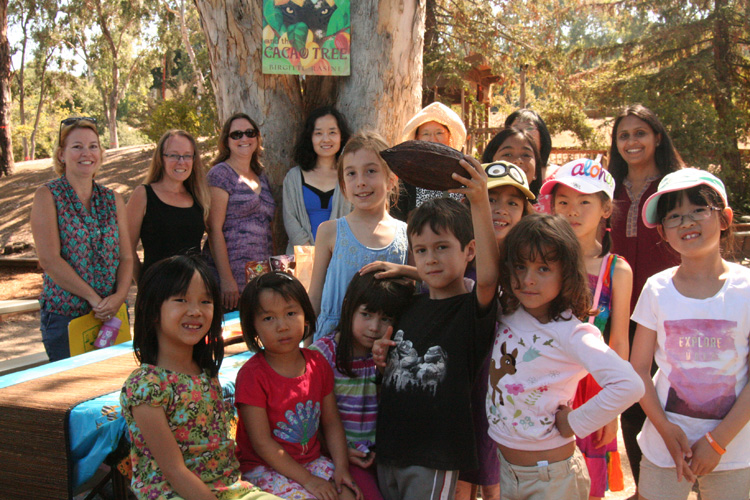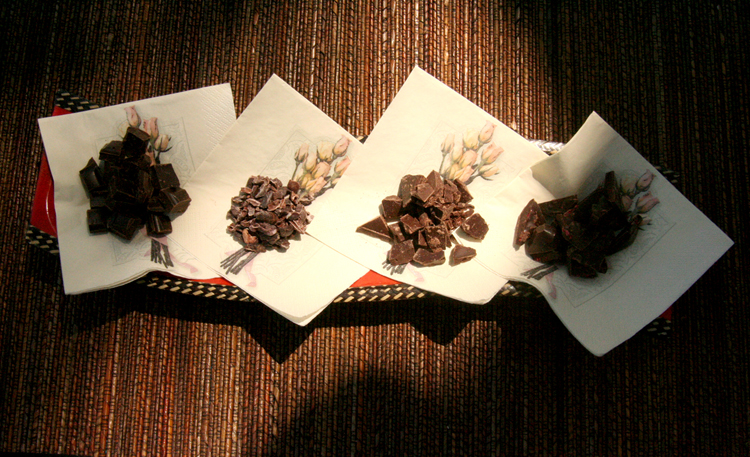OVERVIEW
Cacao Explorers is a brand new enrichment class designed by Ventana's own Birgitte Rasine specifically for our students. Drawing on the philosophy of Reggio Emilia and integrating creativity, collaboration and inquiry, this class engages children in exploring the multifaceted aspects and uses of cacao including the historical and mythological, culinary and nutritional, social and societal, as well as economic and agricultural.
The purpose of this enrichment class is to engage students in systemic thinking and experiential learning—using cacao as the point of departure, we explore the angles and topics that are related to and relevant to this plant whose fruit we all enjoy but know so little about, from biology, ecosystems and pollination to growing, harvesting and production, to historical and mythological aspects, to the hands-on making and tasting of chocolate.
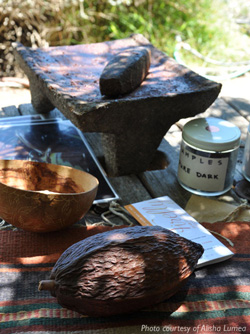 The class incorporates:
The class incorporates:
• reading, writing and literacy
• creativity, innovation and self-expression
• critical thinking, observation and analysis
• group discussion and collaborative participation
• literature & mythology
• history and science
• hands-on experiential learning
Check out the photo galleries of the workshops I've done here in the Bay Area. The Ventana "Cacao Explorers" class takes these workshops to the next level, and brings in a lot of new material.
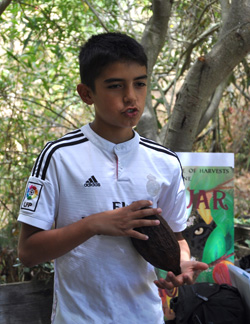 MODULE 1: CACAO CIRCLE
MODULE 1: CACAO CIRCLE
Date: Friday, November 4, 2016
In this first class, we engage the children in sharing their own special or personal stories and experiences with cacao and chocolate, and involve them in shaping the content of the upcoming sessions—what specific questions do they have about the biology and pollination of cacao? About the production of chocolate? About its history and mythology?
Our first discussion provides a broad overview of the role this ancient food and plant have played throughout history, up to modern times. The questions the children ask will be integrated throughout the upcoming modules.
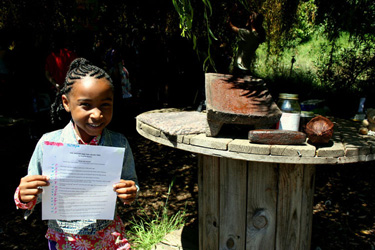
MODULE 2: MYTHOLOGY AND HISTORY
Date: Friday, November 18, 2016
We open with a brief discussion about some of the little-known but fascinating facts and anecdotes about cacao's 5,300-year history and mythology, from Lord Cacao of Tikal and the great Feathered Serpent, Quetzalcoatl, to the celebratory aspect of cacao, to the development of the chocolate making process and technology in use today. We engage the children in role play, writing and/or illustrating their own cacao myths and histories.
The purpose of this module is to expand students’ understanding of how a single food can impact multiple and distinct societies, cultures, and economies.
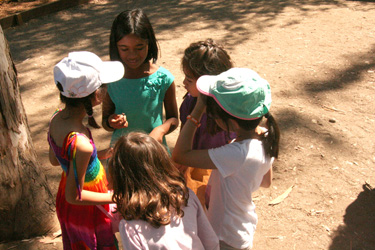 MODULE 3: CACAO AS CURRENCY
MODULE 3: CACAO AS CURRENCY
Date: Friday, December 9, 2016
In this class we open the floor to discussion and interactive game play around the value we assign to things. In ancient Mesoamerica, cacao was both a sacred food and the basis of their financial system. We talk about how different or similar this is to our own concept of money and economic value.
Kids engage in a treasure hunt and in creating their own food- or plant-based currencies. We also engage them in an interactive reading/role play relevant to this topic.
MODULE 4: CACAO'S ECOSYSTEM
Date: Friday, December 16, 2016
Today we explore all of the different plants and animals that co-exist in a cacao grove, from the tiny little midges that pollinate cacao flowers to the great Jaguar. We explore questions like, what does the jungle’s top predator have to do with the world’s most desirable food? We’ll explore these and other connections, which range from the concept of keystone species and habitat corridors to the impacts of monoplantation and the importance of ecosystem diversity.
We close with an interactive reading/role play.
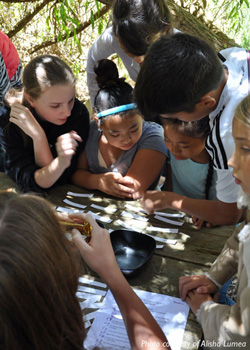 MODULE 5: FLAVOR PROFILES, NUTRITION, AND HEALTH
MODULE 5: FLAVOR PROFILES, NUTRITION, AND HEALTH
Date: Friday, January 6, 2017
This is where the real fun begins! We get to taste different types of chocolate* and engage the children in learning how to tell the difference between different types of chocolate and how to describe the different flavors they're tasting. This imparts an important life skill: opening your palate to the hidden or latent flavors of food and the ability to describe the experience.
We untangle some deep-seated misconceptions about chocolate and its nutritional and health values, from the role that sugar and chemical additives play in overpowering a natural food's real benefits, to chocolate's incredible natural chemistry.
We will also play a fun team-based game called “Read My Label,” where we learn how to read the ingredient lists on the chocolate bars we buy, how to avoid being mesmerized by fancy packaging, and how to tell the “good for you” chocolate from the “not good for you” chocolate. The purpose of this activity is to teach children how to read and understand ingredient labels and recognize the various ingredients in the foods they eat, not just chocolate but in general. This is another important skill that goes far beyond chocolate bars.
*Note: All chocolate provided will be either organic or natural, and free of artificial preservatives, emulsifiers and other additives. Due to allergies, we will not include any chocolate with nuts for this activity.
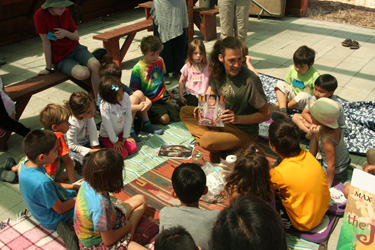 MODULE 6: LET'S MAKE CHOCOLATE!
MODULE 6: LET'S MAKE CHOCOLATE!
Date: Friday, January 13, 2017
Jonas Ketterle of Firefly Chocolate, the first bean-to-bar chocolate maker in Sonoma County, visits us to share how chocolate is made and talk to us about how he sources cacao beans. The kids then get to make chocolate from scratch, peeling the cacao beans by hand, and grinding them on the age-old tool called a metate. The only other ingredient is honey. No sugar, no additives, just pure natural chocolate.
(Parents, you might want to pick up a little earlier today so you can get your share of the chocolate spoils!)
Jonas sources his beans by direct trade from farmers who grow the best cacao in the world—heirloom cacao.
STORY TIME
As time allows, we will engage the kids in brief interactive readings and role plays based on passages from books about cacao and chocolate that illustrate the particular lessons or concepts for that module.
COLOR ME CHOCOLATE
At the end of each class (also as time allows), we wind down after all the exploration and learning we’ve been doing with relevant preview pages from The Jaguar and the Cacao Tree Coloring Book.
WHAT THEY LEARNED
At the end of the session in January, your child will bring home a summary outlining his or her individual journey and learning as a Cacao Explorer, including fun suggestions for how to continue the experience at home. As for the chocolate we make with Jonas, don't expect there to be any left over after our last class! :)
Images:
